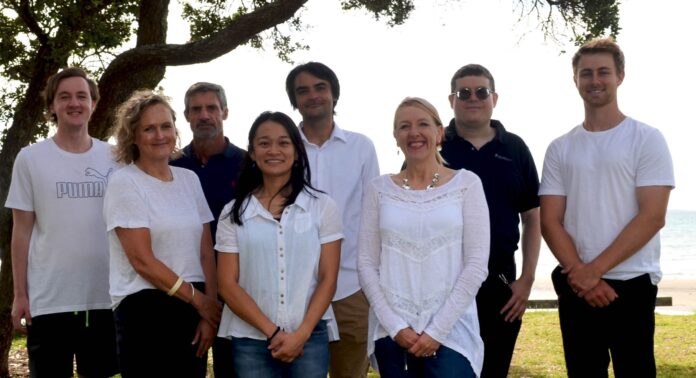Exploring ways to minimise construction and building waste is a passion for Dr Terri-Ann Berry, director of the newly formed Environmental Innovation Centre (EIC). Dr Berry has partnered with experienced Master Builder Nigel Benton to develop practical environmental solutions for the construction industry. In a new monthly Building Today column, the team at the Environmental Innovation Centre (EIC) will present practical advice for managing construction waste and other environmental issues builders might encounter.
Have you ever wondered what happens to all the plastic waste on-site?
The answer is not pretty, with the majority of construction industry plastic waste ending up in landfills.
Currently, construction waste represents 50% of the waste filling up New Zealand’s landfills, with plastics as a major contributor.
In Auckland alone, approximately 25,000 tonnes of plastic waste ends up in landfills annually. A residential build, on average, produces waste equivalent to around 634,000 plastic bags.
Construction plastic is detrimental to landfills as, with its low density, it takes up a lot of space, and will not break down for hundreds of years. This occupies valuable land that could be used for more sustainable purposes.
When not sent to a landfill it often ends up in waterways, contributing to environmental pollution and posing long-term hazards to ecosystems.
But is there anything you can do about it?
Yes! Essentially, to reuse or recycle plastic, it must be sorted into plastic types — a bit like your domestic waste. Unfortunately, there are a lot of different plastic products in the industry, so how could anyone know which ones to sort where?
To address this, BRANZ has funded a project where Dr Terri-Ann Berry and her team partnered with six contractors to trial a practical, new plastic sorting system.
An example of one of these trials was with Master Builder Nigel Benton, who was alarmed at sending skip after skip of construction and demolition waste to landfill.
Benton and the EIC team, then still known as the Environmental Solutions Research Centre, undertook a trial to reduce waste on-site at a new project to build eight terraced townhouses in west Auckland where they aimed to divert 90% of waste generated on-site from the landfill.
Similar developments typically produce approximately 16 tonnes of waste, equivalent to about eight cars!
To prepare staff and subcontractors for this multi-build project, EIC delivered training on the “how-to” of waste sorting. Bins were clearly labelled and included pictures for quick reference.
The sorting system meant plastic could either be sent back to the supplier or sorted into the right types for recycling.
The results were excellent! A total of 22.4 tonnes of materials were collected and audited, of which 18.4 tonnes were recycled or repurposed, including 830kg of plastic waste, a third of which was soft plastic.
Most of the soft plastic was recycled by Hamilton-based SaveBOARD. Best of all, the target was exceeded, with 91% of waste diverted from the landfill, making Benton very happy.
“We were able to repurpose 91% of all construction waste from one site,” Benton says. “There was a mega amount of plastic used.”
Got plastic waste? Get it sorted!
Sorting is the key, so the main plastic waste streams on-site can be either returned to the supplier or recycled, preventing them from going to landfill.
As an example of how this can be done, refer to the decision tree above that EIC has developed for Scaffolding, Access and Rigging NZ to help their members and other participants in the industry.
These decision trees will vary between different industry sub-sectors and regions in New Zealand, and EIC is working on making more bespoke material to support the industry.
Here is the process broken down into five steps:
• Identify plastic waste streams. Common ones include soft plastics, polypropylene, polystyrene, pipes, food, and drink waste.
• Return to the supplier? Check if your supplier will take it back.
• Find local recyclers/transport options.
• Set up a recycling area with signs and bags.
• Train your staff to use the signs to identify plastic, and sort it in the right condition.
Currently, EIC is developing an education hub for construction companies with a series of resources to make it easier to divert plastic waste from landfill, including training videos, a plastic catalogue, signage, and bags.
• EIC will present a monthly column in Building Today, and will keep readers updated on progress with construction waste trials focusing on key plastic waste streams, including suppliers with take-back schemes, recycling options, and case studies of companies successfully diverting waste from landfill.
If you have any questions for the team that you would like answered in this column, please contact [email protected].




